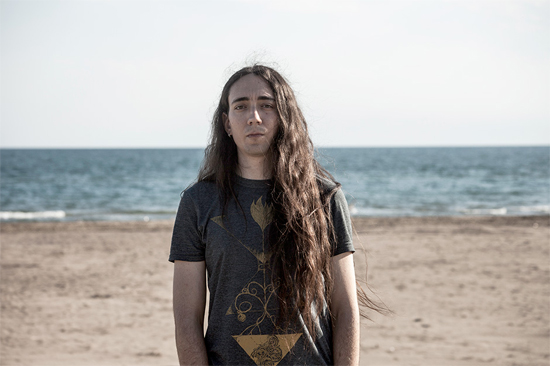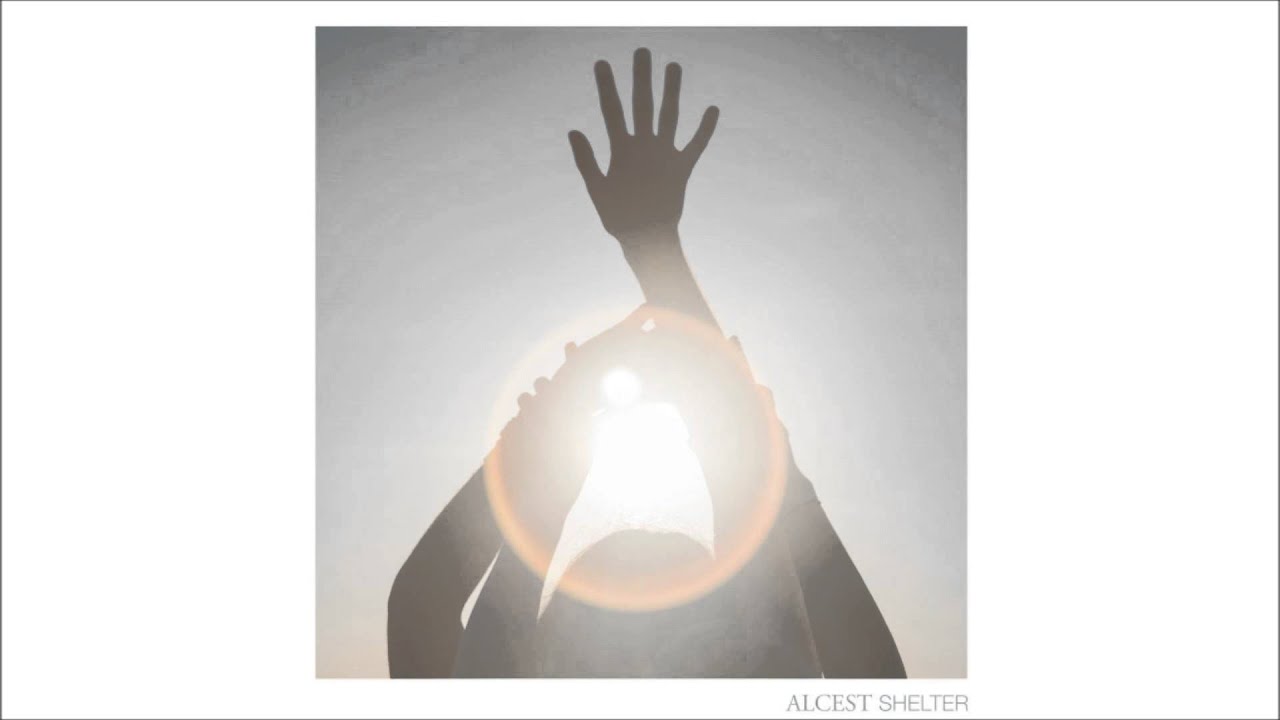Alcest’s near-decade long run of formal releases combining black metal’s hoarse extremities with the majestic flow of goth and shoegaze guitar textures – all centered around singer/composer Neige’s interpretation of his own mystical experiences – has resulted in the French band’s achieving considerable fame and not a few followers in their footsteps worldwide. But the rumors about this year’s Shelter being a complete plunge into huge sounding dreampop, with nary a rasp to be heard, were it transpired true. There are already signs that it’ll be both as highly regarded and as divisive a release when it comes to metal fandom as was last year’s Sunbather by Deafheaven – an act openly indebted to Neige’s work in turn. Going so far as to include a cameo vocal appearance by Slowdive veteran Neil Halstead on the song ‘Away’, Shelter is a majestic effort. Speaking over Skype in December, Neige sounds both passionate and quietly assured about his latest album and current path.
What were the ultimate goals for Shelter?
Neige: There were several of those with this album. One of them of was to make not metal as such, so we escaped all the metal influences from Alcest’s music. Also, to make a very rich album but also simple. One or two riffs per song, but the sound is very wide, a lot of tracks and a lot of textures. As always, I always tried to make a diverse album in terms of emotions and sounds. I am very proud of this record. Sometimes when you record an album in the end, there are things here and there you regret production wise or in composition. But this is the first time that I think listening to it after the recording – it’s never perfect, but it’s the first time.
How quickly did the recording itself take?
N: The recording itself I think was two months, one month for the recording and three weeks for the mix. We went to Iceland and the Sigur Ros studio, Sundlaugin – Biggi Birgisson worked with Sigur Ros for many years, and we didn’t have to talk too much. A great experience.
Were there any particular surprises or complications that came up in the recording?
N: Just taking the example of my drummer Winterhalter – as you know, for the previous records it was more metal influenced. I decided to do a switch, and it takes a while to switch to from one job to another job. I guess in the beginning he was a bit surprised and skeptical. It’s always scary to take a big decision like this for the band, but you have to be sincere, not doing what they want you to do. So it was difficult, but then when we started rehearsing and finding the drum patterns, he got into the style and that genre of music. He really liked the way the songs are, and is as proud of this album even if it’s not metal anymore.
Even if the shape of the music changed, the core is still the same. It’s just the way to express emotions that are same as the ones we had before. There are so many bands always doing the same album over and over; I want to evolve, try new things. You just have to be adventurous and that’s the way I like to work. I think that’s the role of the artist, to do something difficult, doing it first for himself. That’s my definition of sincerity. Sometimes people think that that you are going softer, or you are going mainstream, but that’s not true. It’s way more true to change your style.
‘Delivrance’, taken from Shelter
You had a chance to debut some of these songs on tour last year – how did they go over with your audience?
N: First it felt really great playing these new songs – it’s always good to go from a heavy song to a softer one. It helps having the attention of the audience for the whole show – three hours of the same songs for the whole show is boring. When we finished the set and went into the crowd, everyone was saying, ‘Oh the new songs are so great!’ I’m not always confident, so these reactions made me feel very confident. ‘Délivrance’ ended the set, and it was a very epic ending.
While there’s an obvious connection to Slowdive, given Neil Halstead’s cameo, I heard any number of hints to various bands and approaches throughout Shelter. It felt like a good mid-90s shoegaze album, something after the first wave when more acts were reacting to what had just gone before.
N: It’s more like a global sound. What I said to Winterhalter is that I would like Shelter to sound like a dreampop album from the early 90s – so, Slowdive, Ride, but more than one specific band, not sounding especially big or clean or huge, but a very specific kind of sound. These days, bands do the biggest production they can do, and that’s not good for the songs. It throws away all the dynamics. We try to mix in things differently for every song. Having this very grimy and organic feeling was something we wanted to have, where the previous albums were a bit too clinical, a bit too clean, maybe? I thought, "Let’s do a real production job, not just try to do a good sound."
Talking a bit more about individual songs – for me it seems the center of the album was ‘Voix Sereines’.
N: ‘Voix Sereines’ I consider more [part of] the beginning, ‘L’Eviel’ is more the middle of the album for me. But ‘Voix’ is the start of the deeper side of the album. The earlier ones are more rock and poppy songs, more verse chorus verse. With ‘Voix’, we go into a more epic feeling, with different song structures that are also more cinematic. We do have two kind of songs – the poppy ones, like ‘Opale’, and the very cinematic songs like ‘L’Eveil’. That’s something I wanted to do, bring a lot of diversity. I’m not sure it hasn’t been done before, four minutes of shoegaze then something completely cinematic.
Given that, could you speak more about ‘L’Eveil”s particular importance?
N: ‘L’Eveil’ is the deepest, darkest song on the album, very long, very hypnotic, with one riff that is growing and evolving. It’s mean to have a very aquatic, abysmal feeling. The fact that it’s the center of the album for me is that it’s the deepest point, where ‘Délivrance’ is the more emotional point, the climax. The middle is where things really happen, where you go "I like the album or I don’t like it," in a way.
Was there much difference between how the songs were first conceived and their final forms?
N: I compose all the music first, all the melodies and structures, which I then take to Winterhalter for preproduction. I think we get quite close, but when we go to the studio, we leave some space for studio creativity. The biggest change in studio was to use restraint, and that wasn’t really expected – it make the whole thing more lively and organic. At the end of "Délivrance," that was something we decided to do in the studio. On the pre-production, it ended with the whole band climax. In the studio, we decided to bring only the melody and the vocals.
Another one of the more striking songs to me was the title track, its piano melody really made me think of early 90s Cure a lot.
N: That piano was another change in the studio – it wasn’t there in pre-production, and we thought in the studio it was lacking something. We tried to find arrangements, then we came to do this piano thing. I found this very simple melody, it sounds quite nice in the mix, very reverby and delayed, and it’s always great to have different sounds on the album.
Looking to whatever might be next, where do you see Alcest going?
N: What excites me is to know I don’t have any limits, that it’s quite an open project, more open than I thought it could be. To have this freedom to try very different things. I listen to lots of music from every genre, and I’m already thinking about the next record, perhaps something more rhythmic? Shelter is almost an ambient record, drums mixed quite low. On the next one, I want to spend more time on the drums, a few electronic sounds. This aspect has never been present in Alcest, so let’s try it. Every time I make a record, it’s a gem with different facets, and every time I like to explore a different side. The core is the same, it never changes, but I try to create a different shape. I don’t like to put labels on it, because I don’t think it’s a good way to describe it. It was always a great challenge: how can I make a dreampop album that’s still very Alcest, but not a ripoff – how to keep the core.
Alcest’s Shelter is out now via Prophecy Productions



